Every action your customers take creates data that can be used to provide better experiences, manage their journey more smoothly, and ensure they find the right products. But millions of users and billions of actions across your site creates a lot of data—more than any human can manage, let alone act against.
The best way to harness this data and start seeing the benefits is by implementing AI and machine learning technology.
Integrating AI in Ecommerce
In a world where ecommerce companies are constantly searching for new ways to stand out from the competition, any advantage can be a game changer.
By harnessing AI to process vast amounts of data, businesses can revolutionize each part of their business, from product discovery to inventory management.
Here are a few of the best use cases for AI in ecommerce:
- Making search more effective
- Reranking product results
- AI-powered autosuggest
- Hyper-personalizing user experiences
- Streamlining merchandising tasks
- Setting predictive pricing strategies
- Generating actionable ecommerce insights
- Fueling product recommendations
- Inventory management and sales forecasting
- Boosting omnichannel commerce with AI
1. More Effective Ecommerce Search through AI and Machine Learning
When a potential new customer first visits your site, what do they see? How do they interact?
Search is often the first way visitors engage with your site. Getting this right can be the difference between making someone a lifelong customer and making them leave your site and take their business to a competitor.
Often, your site’s visitors don’t know exactly what they’re looking for. Sometimes they misspell search queries. Sometimes they just need a little nudge in the right direction. And even if they know exactly what they want, many of the products that appear in search results may not appeal to that customer’s specific needs.
In these use cases, modern AI-based ecommerce search platforms use tools like natural language processing (NLP) to understand exactly what a visitor is looking for, even if they misspell words or use unusual search terms.
For example, Cognitive Embeddings Search uses deep learning and NLP to build a map of related and interconnected products. If a customer searches for “bedside table” and there isn’t a direct match for that query, CES ensures that it finds the products that match that query the best (the closest products on the “map”) and returns them. In this case, the AI might pull products that rank for the query “nightstands” or “end tables” to provide relevant, attractive results.
2. Re-Ranking Product Results in Real Time
Product search and discovery platforms backed by machine learning and ecommerce clickstream data can automatically re-rank search results to show the items most likely to lead to a conversion.
If an item is outselling others that rank higher on a specific search term, that product will begin to automatically move up in the rankings, leading to higher conversion rates.
Learn-to-rank systems are fantastic for ensuring that shoppers not only see relevant results, but attractive results too.
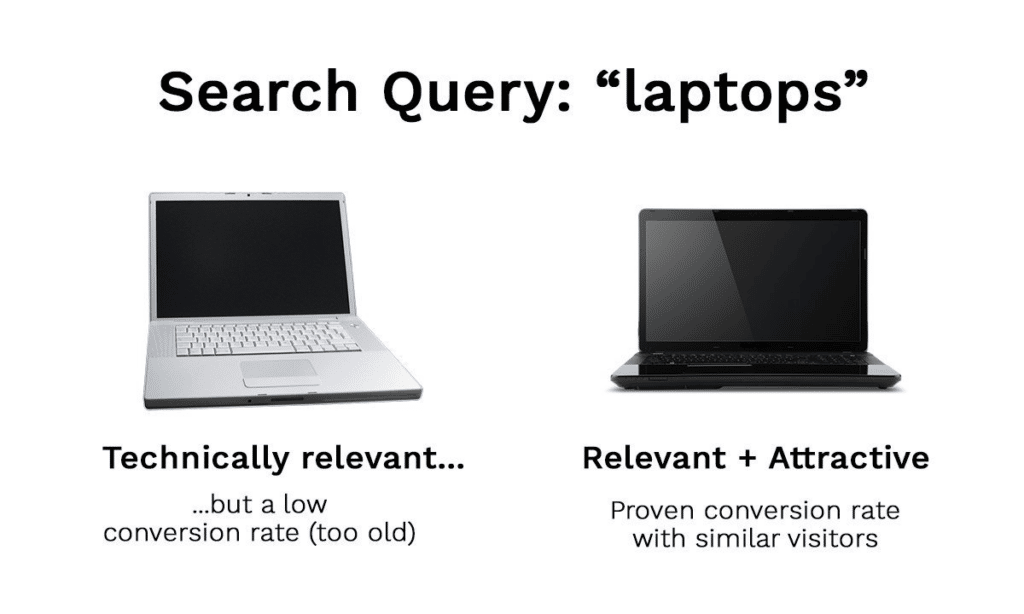
3. AI-Powered Autosuggest Using Search Data
Search bar autocomplete is highly effective at driving revenue, boosting conversions by up to 24%.
Great autocomplete, however, does more than estimate basic user queries. Ecommerce giants are now combining Natural Language Processing (NLP) algorithms with autosuggest to present query results that approximate search intent. These algorithms are commonly used to:
- Correct phonetic misspellings, keyboard proximity typos, punctuation nuances, and omitted character typos. Is it “blue ray”, “blue-ray” or “bluray?”
- Detect synonyms to serve relevant results to users. If a user is searching for “suntan lotion,” good autocomplete will recommend “sunscreen.”
- Identify word importance to better understand what results will most likely lead to a conversion.
4. Hyper-Personalizing User Experiences
Ecommerce companies that invest in advanced personalization consistently see incremental revenue growth of 10% or more, according to the Boston Consulting Group.
Hyper-personalization is the difference between showing a visitor a list of items and giving them a curated experience. Services like Netflix, Spotify, and Youtube seem to know what content you want before you do.
This type of AI-fueled hyper-personalization is built on clickstream data. AI can enable ecommerce businesses to look at each click, each search, and every item added to a cart to better understand the items each customer likes and predict what they’re most likely to buy.
It’s a big part of why industry leaders like Sephora and Bonobos are so good at showing the right products to the right people, increasing conversions and key metrics like RPV.
If a customer tends to search and purchase organic foods, your search should use clickstream data to automatically re-rank organic foods to the top for every query. Your facets can be ranked as well to display organic (or other related facets) near the top of the filter selection.

Personalization is about learning your individual customers’ preferences based on their historical data and previous interactions with your site. With every search, click, bounce, add-to-cart, and purchase, your customers are telling you what products they prefer to buy.
5. AI-Assisted Merchandising
On any ecommerce website, there are thousands, or hundreds of thousands of search queries that should present a significant number of results, but don’t — whether it’s due to a misspelling in the search query, the use of a synonym that isn’t detected by the search system, or something similar.
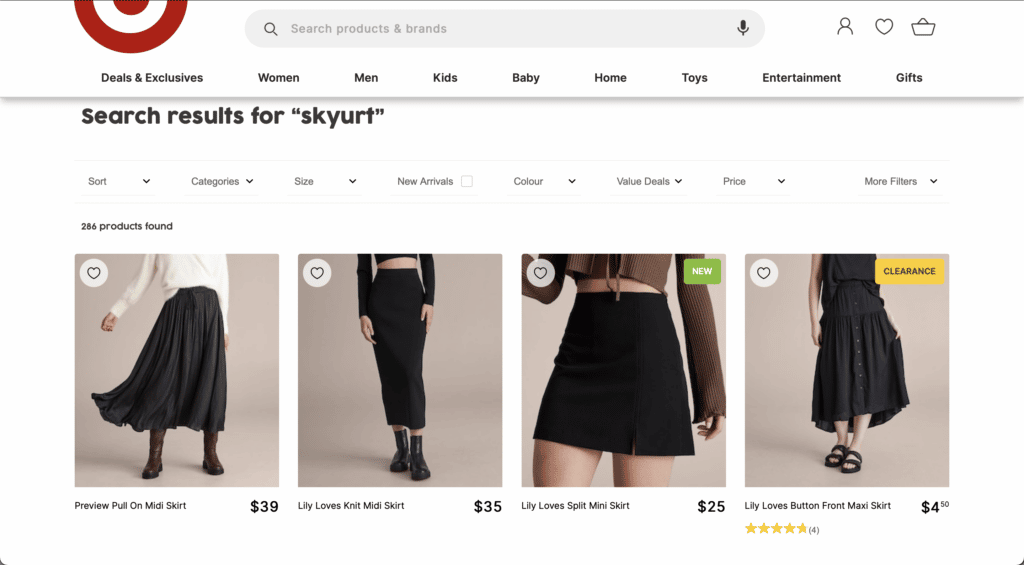
Due to the way outdated legacy search systems work, merchandisers and engineers often have to manually set up synonyms and redirects for many queries. With the constant stream of new additions to product catalogs and changing customer behavior, this quickly becomes an exercise in futility.
Applying AI technologies, modern merchandising through AI and machine learning can free up merchandisers to do their best work. Instead of tasking them with building extensive manual rules that serve as a bandaid for outdated systems, an AI-driven product discovery platform lets them manage by exception instead. This allows them to apply their ecommerce expertise to override the AI when a human touch is needed instead of the other way around.
6. Using AI in Ecommerce Pricing Strategies
Just as putting the right product in front of the right customer creates interest, matching that customer with the right price drives the sale home.
Altering product prices based on customer demand or elasticity isn’t new (airlines have been doing it for quite awhile) and can be done with the data your customers are already giving you.
As Ignite Outsourcing explains, “Deep learning allows AI to make an informed hunch on what you are willing to pay for that hotel room or set of aluminum tumblers. And chances are it knows before you do.”
Here are some basic strategies that online retailers today are using to set dynamic pricing:
- Predicting the best price for each product. Just as AI solutions can alter product rankings, they can also alter the pricing of certain items based on how likely users are generally to purchase products they see at specific price points (as well as the highest price point they’re willing to purchase at). This strategy takes a macro look at customer interactions and sets the global price for that product to achieve the maximum profit or revenue.
- Predicting the best price presented to each customer. By looking at what products an individual clicks, adds to their cart, and purchases, a dynamic pricing AI can alter the price of an item to increase the likelihood of a conversion for that particular customer. First time purchasers can be enticed with lower prices, or more price-sensitive customers given slightly lower rates. In other words, dynamic pricing AI can serve personalized prices.
7. Generating Ecommerce Insights
While AI is incredible technology, it shouldn’t be trusted blindly. The stakes in ecommerce are too high—at any moment there could be millions of dollars on the line. As such, any AI platform should be transparent, allowing you access to the best information and actionable insights to inform your key decision making.
In product search and discovery, for example, your AI should be able to answer the following questions:
- How do customers reformulate their searches?
- How many queries end in zero results?
- What searches are trending and could be optimized with new synonyms?
- Which facets are customers using to narrow down their search or browse?
- How is each merchandising rule performing?

Your AI solution should be a partner in helping you optimize your ecommerce operations and understand the impact of both human and AI actions. This might take the form of an alert if something is underperforming or a prompt to review a setting that hasn’t been changed in a while.
8. Fueling Product Recommendations
Clickstream data gives commerce companies the ability to provide truly personalized experiences, not just across search and browse but also across recommendations. Recommendations can appear anywhere across the site—from suggesting alternative choices at the bottom of each product page to recommending complementary products in the customer’s shopping cart.
AI enables those recommendations to be relevant and attractive, increasing the chances of conversion.
Amazon, for example, serves personalized product recommendations on nearly every page on their site (home page, product pages, etc.):
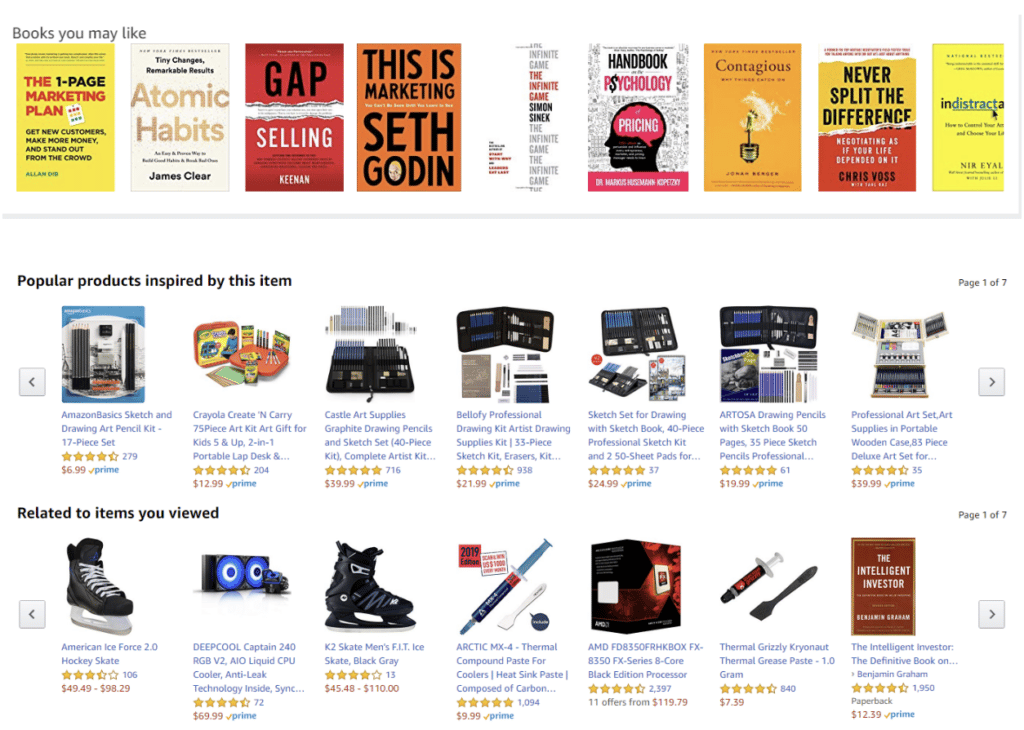
They also recommend complementary items to users who’ve viewed or purchased similar items:
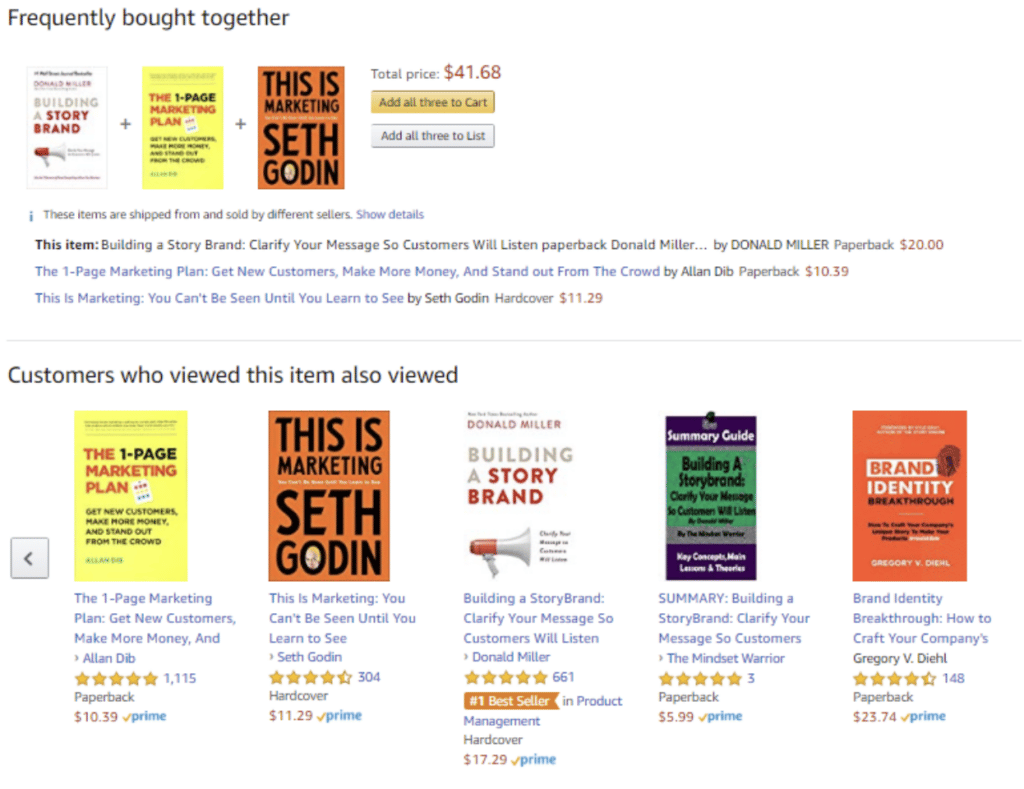
These dynamic, AI-driven recommendations drive higher RPV and build customer loyalty. By showing that you know what your customers want, they will keep coming back for more and trust your brand to understand them.
And the best part?
These kinds of AI-driven insights aren’t exclusive to Amazon.
9. Inventory Management and Sales Forecasting
With ever-evolving product catalogs and changing customer demand (not to mention supply chain disruptions), knowing how much inventory to keep on hand can be way too much to handle manually.
With an AI platform specifically designed for ecommerce inventory management, you can take the guesswork out of your inventory management process. Deep analysis of buyer data such as buying behavior and seasonality allows you to more accurately predict and plan for stocking.
Using AI for inventory management and sales forecasting can help you:
- Analyze previous, current, and projected sales throughput
- Predict, report on, and quickly solve vendor issues
- Predict changes in customer demand
- Analyze market changes that could affect sales
All of this can help make your business better at predicting demand and meeting it with the right product at the right time.
10. Boosting Omnichannel Ecommerce with AI
AI isn’t only a powerful tool for improving on-site customer experiences.
It can also be used to process the behavioral and zero-party data your customers give you and deliver personalized content across multiple touch points — like email marketing, social media, advertising, and more. By using an AI-based product search and discovery platform you can collect that data and push it to other platforms, building a powerful omnichannel customer experience.

2022 Ecommerce Trends: AI and Omnichannel Experience
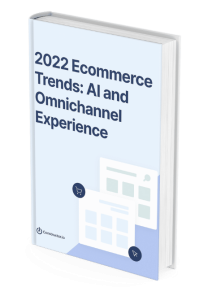
In this 38-page PDF, learn how forward-thinking ecommerce retailers are gaining advantage and driving revenue in 2022 by applying three main strategies:
- Hyper-personalization
- First-party clickstream data
- Omnichannel product discovery and customer experience
